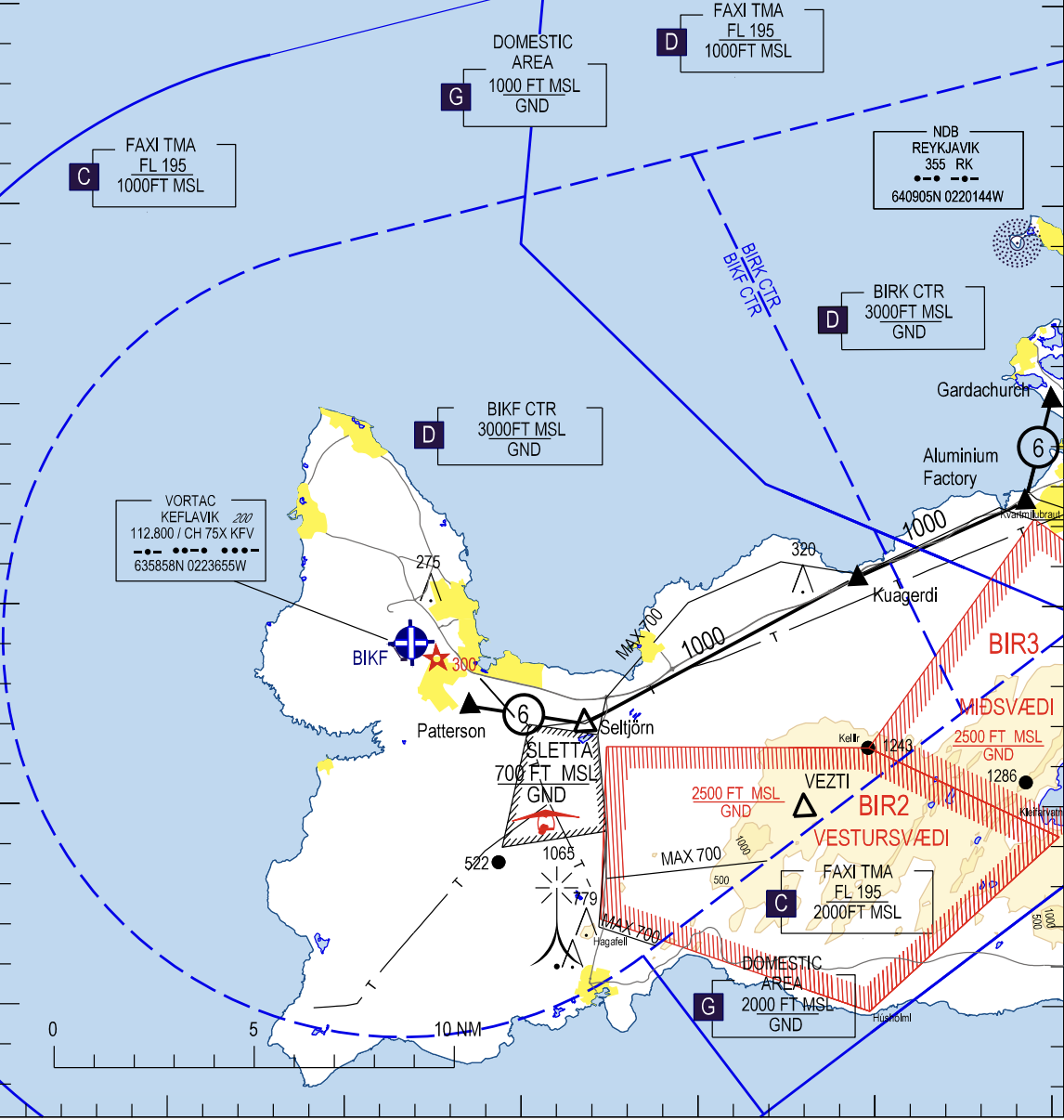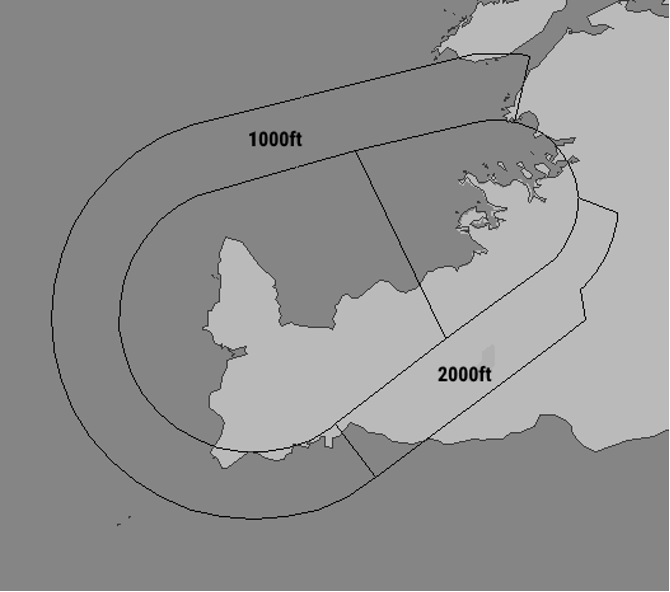Keflavik TWR
Keflavik Tower (BIKF_TWR) is responsible for BIKF’s runways, and for providing ATC service in the Keflavik Control Zone (BIKF CTR.)
Runway Configuration
Preferred Runways
RWY 01/19 is preferred for noise abatement. Therefore, if the tailwind component for RWY 01 or 19 is less than 5 KTS, TWR shall designate RWY 01 or 19 as the active runway.
When the tailwind component exceeds 5 KTS for RWY 01 or 19, TWR shall revise the runway configuration to use whichever runway has the strongest headwind component as the active runway.
Additionally, landing RWY 10 and departing RWY 28 may be approved at pilot request (traffic permitting) for noise abatement.
Low Visibility Runways
Additionally, note that RWYs 10 & 19 are CAT II equipped, and therefore they are the only runways usable for landing when Low Visibility Procedures (LVP) are in effect. See the Low Visibility Procedures page for more information.
Dual Runway Operations
During periods of heavy traffic, Keflavik Tower may, in coordination with Keflavik Approach, implement dual runway operations at BIKF. There are two variations of dual runway operations:
- Upon Request: Designating one runway as the active runway, but permitting departures/arrivals on the other runway on request.
- Dual Operations: Using one runway for all arrivals, and the other for all departures.
During such operations, Keflavik Tower & Keflavik Ground shall keep in mind the following:
- Whenever both runways are active (whether for a one-off departure or arrival, or indefinitely), any blanket crossing clearances automatically become invalid. GND must not instruct aircraft to cross any runway if TWR has not cleared that individual aircraft to do so.
- Departing aircraft must not be cleared to take off until any landing aircraft on the intersecting runway have cleared the departing runway fully.
- TWR may verify this visually without coordinating with GND.
- TWR may verify this visually without coordinating with GND.
Keflavik Control Zone (BIKF CTR)
The BIKF CTR ranges from GND – 3000ft. It is directly bordered by the Reykjavik Control Zone (BIRK CTR) to the east, and is surrounded by the Faxi TMA above and to the sides.
Traffic Circuit
The standard traffic circuit for BIKF is west of RWY 01/19, and south of RWY 10/28. In other words, the turn direction of the circuit is Left for RWY 01 & 28, and Right for RWY 10 & 19.
The standard circuit altitude is 1200ft.
VFR Route 6
There is only one VFR route in the BIKF CTR for single-engine aircraft – route 6 to/from BIRK (named “Straumsvik”) at 1000ft. See the VFR Guide for more information.
VFR departures not on a VFR route should be instructed to report 12 NM out from BIKF. They should be coordinated with either Reykjavik Tower or Keflavik/Reykjavik Approach if they will be entering the BIKF CTR or Faxi TMA, prior to them reaching the relevant airspace boundary.
If an aircraft will not enter the BIKF CTR, and will remain below the Faxi TMA, it may be released to UNICOM without coordination.
Overlying Airspace: The Faxi TMA
The airspace directly overlying the BIKF CTR is the Faxi TMA. The Faxi TMA has “collars” (formerly known as "buffer zones") next to the BIKF CTR which extend down to 1000ft and 2000ft respectively – see the image below:
TWR should coordinate VFR aircraft leaving the CTR, including the collars, with APP. If a departing aircraft will only briefly enter the buffer zone without entering the TMA itself, and there is no conflicting IFR traffic, APP may simply have TWR release the aircraft to UNICOM.
Special Airspace
Neighboring restricted & training areas include Sandskeid, Sletta, and for the duration of the volcanic eruption on Reykjanes Peninsula, danger area BIR4. When there is activity in these areas, Tower should notify aircraft in the vicinity and add appropriate text to the ATIS, e.g., "GLIDERS OPERATING AT SANDSKEID."
Missed Approach
TWR shall instruct aircraft to follow the standard missed approach. If an aircraft is unable to fly the standard missed, TWR shall instruct them to climb straight ahead to 3000ft.
TWR shall coordinate all missed approaches with APP prior to transferring them to APP.
Next ATS Unit for Departures
Generally, all IFR departures should be transferred to Keflavik APP (BIKF_APP), or whoever is covering it top-down.
If both Keflavik and Reykjavik APP are online, then TWR should transfer the aircraft to whichever APP sector the aircraft will be entering the airspace of first. If in doubt, confirm with Keflavik APP.
Reduced Runway Separation Minima
The use of reduced runway separation minima (RRSM) is permitted at BIKF, subject to the conditions outlined in the Tower SOP.


